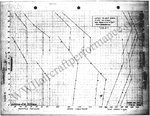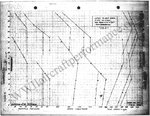GregP
Major
We're taking our airworthy Allison-powered bone-stock P-51A to Reno this year to race. It will be flown by John Hinton. We're also taking Steve Hinton's Merlin-powered bone-stock P-51D to race. It will be flown by Rob Patterson.
By "Bone-stock," I mean they have the engine and props, with NO "hop ups" done. Neither have stock cockpit instruments and no P-51 today does except maybe non-flying museum corpses of formerly-flying aircraft. Miss Virginia has stock fabric-covered elevators while the Wee Willy has stock metal elevators. Both have stock fabric-covered rudders and metal ailerons. Neither has any aerodynamic cleanups ... except maybe some gap seals and a bit of polish or washing, but not any specific "race-prep." We DID do a "once over" and some needed repair to the P-51A found at annual time. Nothing to the P-51D. Both were and are regular fliers.
So ... we MAY see at least one fast lap from each and get some comparisons at Reno altitudes! (about 5,000 feet plus temperature variation ... so density altitude may or may not play a part ... depends on the temp. No promises except the same air for both ... on the same course.
They won't be exactly pushing either one at full bore for all the marbles, but we'll get some indication of relative speeds. Steve's "Wee Willy" is stock, but is a fast one relative to other P-51s we fly with including our own "Spam Can." Wee Willy will cruise side-by-side with Spam Can at a consistent two inches less MAP most of the time, at the same rpm.
"Miss Virginia," our P-51A is stock but we DID install a water system for the race. Don't know if John Hinton will actually USE it, but can probably find out later ... he might tell us and might not. It is running a stock 3-blade, Curtiss Electric prop and Wee Willy is running a stock Hamilton-Standard 4-blade prop. Wee Willy is licensed as "Limited," so the prop meets stock specifications. Miss Virginia is, I believe, "Experimental," but the engine and prop are stock (as is the airframe). It was more of a matter of being licensed in 1980 and maintaining same than anything else. Even has the stock turf tires on it! They don't last all that well on pavement.
So ... stay tuned for lap times and speeds about mid-September for both. Should be illuminating unless one or the other has mechanical issues.
Hope not or it means a lot of work! That is never a good thing when you need to fly it home after the race! MUCH better to fly home with no issues ...
The really technical questions will not be addressed as I have already stated they are basically stock airframes, props and engines. You can make your own estimates. I expect maybe 340 mph or less for a lap speed since they are NOT running in a straight line. I guess we'll see.
If nobody is racing really hard, it will closer to 295 mph, which will not "kill" a stock engine or require a rebuild. But the relative difference will make itself known if neither DNFs.
By "Bone-stock," I mean they have the engine and props, with NO "hop ups" done. Neither have stock cockpit instruments and no P-51 today does except maybe non-flying museum corpses of formerly-flying aircraft. Miss Virginia has stock fabric-covered elevators while the Wee Willy has stock metal elevators. Both have stock fabric-covered rudders and metal ailerons. Neither has any aerodynamic cleanups ... except maybe some gap seals and a bit of polish or washing, but not any specific "race-prep." We DID do a "once over" and some needed repair to the P-51A found at annual time. Nothing to the P-51D. Both were and are regular fliers.
So ... we MAY see at least one fast lap from each and get some comparisons at Reno altitudes! (about 5,000 feet plus temperature variation ... so density altitude may or may not play a part ... depends on the temp. No promises except the same air for both ... on the same course.
They won't be exactly pushing either one at full bore for all the marbles, but we'll get some indication of relative speeds. Steve's "Wee Willy" is stock, but is a fast one relative to other P-51s we fly with including our own "Spam Can." Wee Willy will cruise side-by-side with Spam Can at a consistent two inches less MAP most of the time, at the same rpm.
"Miss Virginia," our P-51A is stock but we DID install a water system for the race. Don't know if John Hinton will actually USE it, but can probably find out later ... he might tell us and might not. It is running a stock 3-blade, Curtiss Electric prop and Wee Willy is running a stock Hamilton-Standard 4-blade prop. Wee Willy is licensed as "Limited," so the prop meets stock specifications. Miss Virginia is, I believe, "Experimental," but the engine and prop are stock (as is the airframe). It was more of a matter of being licensed in 1980 and maintaining same than anything else. Even has the stock turf tires on it! They don't last all that well on pavement.
So ... stay tuned for lap times and speeds about mid-September for both. Should be illuminating unless one or the other has mechanical issues.
Hope not or it means a lot of work! That is never a good thing when you need to fly it home after the race! MUCH better to fly home with no issues ...
The really technical questions will not be addressed as I have already stated they are basically stock airframes, props and engines. You can make your own estimates. I expect maybe 340 mph or less for a lap speed since they are NOT running in a straight line. I guess we'll see.
If nobody is racing really hard, it will closer to 295 mph, which will not "kill" a stock engine or require a rebuild. But the relative difference will make itself known if neither DNFs.
Last edited:




